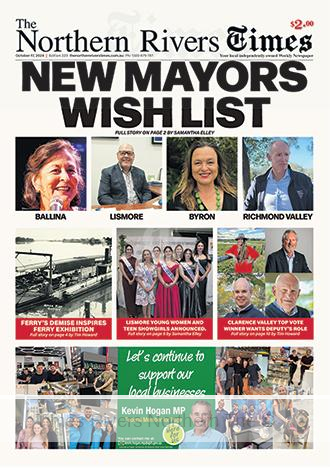Doctors Warn of Rising Psychosis Linked to Medicinal Cannabis Prescriptions
Medical experts are raising alarms over a significant increase in hospital admissions due to psychosis linked to medicinal cannabis. This concern comes as “single-issue” cannabis clinics proliferate across Australia, often prescribing the drug via telehealth consultations with minimal oversight.
Brett Emmerson, Queensland chair of the Royal Australian and New Zealand College of Psychiatrists (RANZCP), is calling for stricter regulations on medicinal cannabis products and prescribing practices. “We’re seeing many individuals experiencing their first psychotic episode after being prescribed medicinal cannabis, or those with pre-existing psychotic conditions relapsing,” Emmerson stated.
Emmerson criticised the practices of some cannabis clinics. “These single-issue clinics prescribe cannabis with little to no checks. They often do not communicate with the patient’s primary doctor, leaving other healthcare providers in the dark about their patients’ use of medicinal cannabis.”
Internet Prescriptions and Rising Psychosis Cases
Emmerson highlighted a troubling trend in Queensland’s Metro North Health, the country’s largest public health service. “The Metro North early psychosis service reports that 10% of new cases involve young people aged 16 to 21 who have become psychotic after using medicinal cannabis,” he said. “Medicinal cannabis is causing harm due to its unregulated nature and its widespread use for conditions without sufficient evidence.”
Cannabis Hyperemesis Syndrome
Jennifer Martin, a general physician and clinical pharmacologist based in Newcastle, echoed Emmerson’s concerns. She noted that emergency departments are also seeing cases of cannabis hyperemesis syndrome, a condition where patients experience severe vomiting due to high-potency cannabis. “Some medicinal cannabis products contain significant levels of psychoactive components, leading to adverse effects,” Martin explained. She also highlighted the difficulty in accessing the prescribing doctors, as many prescriptions are done online through telehealth.
Medicinal Cannabis Usage and Regulation
Medicinal cannabis was legalised in Australia in 2016. Some products are based on cannabidiol (CBD), while others contain tetrahydrocannabinol (THC), the psychoactive ingredient in cannabis. Emmerson noted that anxiety and insomnia are the most common reasons for prescribing medicinal cannabis, but he stressed that cognitive behavioural therapy is a more appropriate first-line treatment for these conditions. “Relying on a drug of dependence when non-drug treatments are available is not the right approach,” he said.
Emmerson compared medicinal cannabis companies to alcohol and tobacco retailers, suggesting they profit from dependency. However, he acknowledged the legitimate uses of medicinal cannabis for conditions such as severe childhood epilepsy and chemotherapy-induced nausea.
Calls for Regulation
In March, the RANZCP released a clinical memorandum calling for regulatory changes around medicinal cannabis. “There is insufficient evidence to support medicinal cannabis as a treatment for anxiety and other mental disorders,” the memorandum stated. The RANZCP is particularly concerned about the high rates of cannabis prescribing for anxiety, which may prevent patients from receiving evidence-based treatments.
Emmerson advocates for making medicinal cannabis a regulated medication like other drugs of dependence in Australia. He also believes the Therapeutic Goods Administration (TGA) should ban THC-containing products, except for those used to treat specific conditions like cancer-related nausea and multiple sclerosis spasticity.
Regulatory Responses and Statistics
In February, the Australian Health Practitioner Regulation Agency (AHPRA) held a forum to discuss the safe prescribing and dispensing of medicinal cannabis. According to a communique from the forum, the use of unregistered medicinal cannabis products has skyrocketed, with over one million patients using these products by January 2024, up from around 18,000 in 2019.
Currently, only two medicinal cannabis products have been evaluated for safety, quality, and efficacy by the TGA: Epidyolex for severe childhood epilepsy and Sativex for multiple sclerosis spasticity. Data from the TGA shows an increase in the variety of medicinal cannabis products supplied in Australia, rising from 504 in 2022 to 690 in 2023.
Despite the rise in usage, the TGA was unable to provide comprehensive dispensing data for medicinal cannabis products. “The TGA is not aware of a single source that can provide complete and accurate dispensing data on medicinal cannabis products,” the agency noted.
Conclusion
As the debate over medicinal cannabis continues, medical professionals are urging for stronger regulations to ensure the safety and well-being of patients. By addressing the current gaps in oversight and ensuring evidence-based prescribing practices, Australia can better navigate the complexities of medicinal cannabis use.
For more health news, click here.





 Tweed Shire News2 years ago
Tweed Shire News2 years ago
 Motoring News2 years ago
Motoring News2 years ago
 COVID-19 Northern Rivers News3 years ago
COVID-19 Northern Rivers News3 years ago
 COVID-19 Northern Rivers News3 years ago
COVID-19 Northern Rivers News3 years ago
 Northern Rivers Local News3 years ago
Northern Rivers Local News3 years ago
 Health News3 years ago
Health News3 years ago
 COVID-19 Northern Rivers News3 years ago
COVID-19 Northern Rivers News3 years ago
 NSW Breaking News3 years ago
NSW Breaking News3 years ago




























